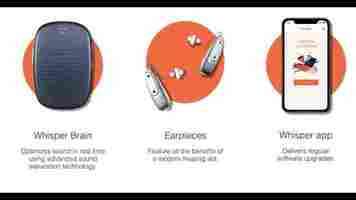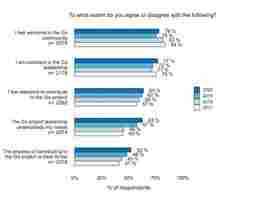Scientists want to call Pluto a planet again — along with 150 other nearby space rocks
A team of scientists in the US is calling for the return of Pluto‘s planetary status. For everyone who’s been clamoring for the little underdog to get its big label back, we have only this to say: be careful what you wish for.

The former head of NASA, Jim Bridenstine, called for the reinstatement of Pluto‘s planetary status back in 2019, citing that “it’s the way I learned it, and I’m committed to it.”
Well, Jim, you may just get your wish and a whole lot more. If you enjoyed learning about the nine planets in our solar system, you’re going to absolutely flip your lid over what could happen next.
Scientists now want to add every Pluto-like rock floating near our sun to the list of official planets.
According to the researchers :
What’s that mean? Basically, it means any geologically-complex entity in space can meet the team’s proposed requirements for planetary status.
Phillip Metzger, the lead author on the team’s paper, told NBC News that such a definition would leave us with around 150 planets in our solar system.
This means just about every moon in the solar system, including Earth’s moon Luna, which is about 1/3 larger in diameter than Pluto itself, would be considered a planet.
The reason for this is because Metzger’s team wants to remove the qualification for planetary status that dictates an object must have cleared its own orbit in order to be considered a planet.
This previously precluded moons, asteroids, and other hanger-ons in our solar system from gaining planetary status.
The long and short of it is this: if Pluto‘s a planet, then so are many of the nearly 200 moons and countless other heavenly bodies in our solar system.
Good luck to all the kids and parents who have to build THAT model of the solar system for their science project next year.
If, like Jim Bridenstine, your reasoning for wanting to see Pluto returned as a planet is nostalgia, then it’s worth keeping in mind there’s no scientific scenario in which our solar system should include exactly nine planets.
This AI-powered gadget could completely disrupt the ridiculous hearing aid market
Hearing loss sucks. It’s exhausting. I’ve suffered from partial hearing loss in both ears since the mid 2000’s. In order to function in the real world, I’m forced to exist in a state of constant vigilance. I have to actively listen all the time in order to avoid creating an environment where people are constantly raising their voice at me.

Over time I developed a methodology for interpreting physical and verbal cues to understand what people were saying to me in situations where it was difficult to hear – such as at a conference or at a table with multiple conversations happening at once.
Then COVID-19 happened and everyone started wearing masks. It was like starting all over again because I couldn’t watch people’s lips to fill in the blanks my hearing left out.
It’s estimated over 5% of the world’s population suffers from hearing loss. While it’s most commonly associated with the elderly, hearing loss is also the most prevalent service-related disability among US military veterans.
The fact of the matter is that hearing loss affects people of all demographics, from children with congenital conditions, to otherwise-healthy adults who’ve suffered injury or illness, to the elderly who experience age-related onset.
Unfortunately, as the CEO and cofounder of Whisper , Dwight Crow recently told me, “It isn’t a very sexy problem to solve.”
AI for good
Whisper’s an interesting company. It builds niche hardware as a means to onboard potential customers to its subscription-based update service. That’s probably not how the company’s marketing team would like its work described, but it’s challenging to reconcile the startup’s ambition with its simplicity.
The big idea here is pretty basic: You get hardware into people’s hands and then use your algorithms to keep them coming back for more. Usually, this model is reserved for entities such as YouTube and Twitter. The end game is typically to keep your attention for as long as possible so you’ll watch as many ads as the big tech bosses can shove down your throat.
But Whisper’s not trying to dupe you into infinitely scrolling in order to soften you up for impulse purchases, it’s trying to solve all of the problems with the hearing aid market.
Hearing aids suck
Hearing devices and the examinations necessary for a medical professional to recommend them are not covered by Medicare or most insurers in the US. This means people with hearing loss – of which low or fixed-income people comprise a significantly high percentage of – have to come out of pocket for their devices more often than not. And that means paying anywhere from one to six thousands dollars per device on average.
The high-end devices using traditional hearing aid tech are okay – once you surpass the cost of a pair of audiophile-worthy music headphones it stands to reason you’ll get more than just “it makes things louder.” Okay is better than nothing, but it still means people have to live with substandard hearing, even when its augmented.
Whisper’s solution to hearing loss offers the prospect of not only augmenting your hearing, but reaching superhuman levels when it comes to distinguishing targeted sounds from noise.
How it works
In a nutshell, algorithms pick apart audio to find all the salient sounds through a process called segmentation. This works similar to how AI figures out what’s in a photograph. If, for example, you snap a selfie in front of a sunset, Google’s AI can pick apart different pieces of the image to label. It might decide there’s a you , a sunset, a beach, some clouds, and some birds in the picture.
Later, if you’ve got the proper hardware and you’re using Google Photos, you can simply say “hey Google, show me all my beach pics,” or “hey Google, find images with clouds,” and the AI can surface those results.
It works the same with audio segmentation, though it’s much trickier to work with overlapping noisy sounds than it is to work with flat images.
Whisper didn’t invent the technology its using – natural language processing and audio detection, segmentation, and isolation, have been around for as long as there’s been audio devices – but it’s among the first companies to develop it into an immediately-useful solution to an ages old problem.
Whisper uses a proprietary ear device that’s designed to be more comfortable than average hearing aids. It connects wireless to a “Whisper Brain” that processes the audio using modern algorithms, this keeps it from being bulky. What’s revolutionary, aside from the tech implementation, is how Whisper solves the surrounding problems concerning hearing loss.
Rather than charge thousands for the device, Whisper works on a subscription plan. This not only allows customers to experience hearing improvements without investing thousands up front, but ensures they’ll receive regular updates as the company improves its AI.
Better still, Whisper offers full damage and loss replacement for three years so you don’t have to worry about you or your loved ones doing without one of their five senses just because something bad happens or they don’t have a large enough emergency fund.
Why it’s important
Numerous studies have shown a direct link between hearing loss and dementia. Yet there have been few longitudinal studies involving long-term outcomes for Alzheimer’s patients who’ve had hearing loss interventions. The research shows that people suffering from hearing loss experience isolation, which can be correlated to worsening dementia symptoms, but exactly how much cognitive benefit a better hearing device could provide people remains unclear.
When I spoke to Whisper CEO Dwight Crow, he explained that the time was right for disruption:
But how much difference can “better” make when it comes to hearing aids? The status quo aren’t too far removed, in purpose, from the old go stick a horn in your ear method from the pre-electronics age. Now, hearing aids use specialty microphones to pick up noises and an onboard audio processor to boost the signals the device gauges as within the proper frequency — but the end benefit for users isn’t all that much greater than just turning the volume up.
It turns out that hearing aids can not only get a lot better, but even a tiny bit of clarity actually makes a huge difference. According to Crow:
What’s next
This isn’t a turnkey AI solution where some fly-by-night startup taps into a hardware market to peddle repackaged university AI (looking at you, Amazon’s second-page AI smart gadgets market).
Whisper’s built a lab in California, it’s worked with the Mitsubishi group on research , and its product development process includes working closely with groups of people who live with hearing loss. And, from what I could tell from my conversation with Crow, the company really cares.
When I asked why they wanted to build a better hearing aid instead of taking the same technology and know-how and building spy-tech with DARPA for the Pentagon or something like that, Crow said it was because with Whisper “there’s just such an opportunity to help people.” Both Crow and his co-founder decided to create the company after watching loved ones struggle with hearing loss and the status quo.
You can find out more about Whisper here .
All Pythonistas should switch to Go… or okay, maybe just half
Your average software engineer is still in love with Python. Married, even.

But not those at Google, Uber, Dropbox, Soundcloud, Slack, and Medium. The programmers at top corporations have long fallen for the language with the cute mascot .
That’s not to say that Python is no good. It’s great!
But whether it’s for APIs, web services, or data processing — while most developers are still using Python, top-performers are adopting Golang, or Go, more and more. Because it rocks.
Go was invented by an all-star trio at Google: Robert Griesemer was one of the heads behind Google’s V8 JavaScript machine and a main developer for Sawzall, another language invented by Google. Rob Pike co-developed the Unix environment and co-created the Limbo programming language. With Ken Thompson, the team had the inventor of Unix and the creator of the B language — the predecessor of C — on board.
Google was originally written in Python — yes, Python is still cool — but around 2007, engineers were searching for a better language to perform typical tasks at Google. They were encountering problems like these, according to a talk by Rob Pike in 2012:
Slow builds: Producing new code was taking forever. Sounds familiar to me!
Uncontrolled dependencies: Have you ever tried to install a software package, only to find out that you have to install at least five other dependencies and umpteen sub-dependencies to get it to work? It turns out that even Googlers have that problem.
Each programmer using a different subset of the language: In Python, one developer might use the NumPy package, another one prefers SciPy, and so on. When programmers want to blend their code into one package, things get messy.
Poor program understanding: People who say they understand code the minute they read it are lying. At least if it’s not a dead-simple “Hello World”-program. And the documentation of the code often doesn’t help — in most cases, it doesn’t even exist, or it’s badly written.
Duplication of effort: Have you ever copied a piece of code from one part of the program, just to copy it somewhere else? Bad practice. But most programming languages make it easy to do.
Cost of updates: With such a mess as described above, does it really surprise you that updating your software is going to take a lot of time and brainpower? Not cool.
Version skew: With duplicate code floating around the place, engineers might only update one version of the original code snippet and forget about the others. So you end up with a version that contains both new and old code. Sounds chaotic? It is.
Difficulty of writing automatic tools: It’s possible to write programs that write code themselves — in fact, most programs do that at some stage. But with modern programming languages, that is still hard to pull off.
Cross-language builds: You know the problem — Python is great for small-to-medium scripts, C++ is great for elaborate programs, Java is great for web development, Haskell is great for lazy but robust code. The result is that a single program often contains snippets from many different languages. But for compiling, debugging and for the sake of cleanliness, it is much better to write a program in one single language.
So the trio set out to design a language that was clean, simple, and readable. A language that would eliminate, or at least ease, these all-too-common problems in software engineering.
The root of many of these common problems is the complexity of modern languages. Think of Python or C — have you ever tried to read the whole documentation? Good luck with that.
In contrast, the greatest feature of Go is its simplicity. That’s doesn’t mean you can’t build complicated code with it. But Go is very deliberate about not having features that bring more complexity without solving the problem.
For example, Go doesn’t have classes like other object-oriented languages. A much-used feature of other languages, classes are great to make one object inherit the properties of another object. The problem is that if you try to change the structure of one object without changing that of the others, you’ll break the code. Go has an alternative, called struct, that favors composition over inheritance.
Other key features of Go are:
Type safety: In C, you can use pointers to do just about anything — including crashing the program. Go doesn’t let you mess around like that.
Readability: Like Python, Go puts readability first. This makes it more beginner-friendly than most languages, and makes code easier to maintain.
Documentation: Especially junior developers find it tedious to write some blurb about your code so that others can use it. With Godoc , this process is much more automatized than in most languages — and the developers don’t have to waste valuable time by writing down what they’ve been doing.
Orthogonality: This means that if you change one object in your code, no other object will change because of that. In this sense, a radio is orthogonal because the volume doesn’t change if you change the station. Much unlike C, for example — if you change one thing, then others can depend on that and also change. Go is orthogonal because it makes things simpler.
Minimality: In Go, there’s only one way to write a piece of code. Compare that to Python, where you have zillions of ways to write one thing!
Practicality: Important stuff should be easy to code — even if that means that other things are impossible to do in Go. The logic here is that you want to increase the productivity of a developer by making recurring tasks fast and easy. And if there is a more complex problem — which is a rare occurrence anyway — they can always write that in another language.
All this might sound boring and uncreative. And in a sense that’s true — this is no language with funky features that you could use to impress others, a plethora of ways to solve a problem, no freedom without limits. Go is no language that is there to explore, to do research with.
But it’s amazing when you’re trying to build something that works. When you’re on a team with lots of different people from different backgrounds working on the same code. When you’re tired of all of the mess that you encounter with other languages.
…With a thriving community
Because of its simplicity, Go is one of the most collaborative languages that exist these days. The times are over when programmers used to sit in their little cubicles and never meet others.
Now, we have StackExchange to solve all our coding problems. And we have Slack, Zoom, Google Meet, and more to stay in touch with our team. But modern languages are still tailored to the little nerd in the cubicle.
Go changes that. Despite being twenty years younger than Python, it has a vibrant community.
So it comes as no surprise that they put respect, openness, and friendliness atop their code of conduct . While other languages, like Python or C, also have comparable community statements, there is less emphasis on these basic values.
So it’s no surprise that the community plays an explicit role in the annual Go surveys — unlike in many other languages.


The data speaks for itself
According to the 2020 Go survey , Google’s language is mostly used for web development, network, and systems programming. The landscape for Python looks pretty similar:
The only striking difference is how much Python is used for data analysis and machine learning. And on these domains, other hot new languages are emerging.
Apart from that, you can see that many of Python’s usages could be replaced by Go. That includes 50% in web development, 38% in system administration and DevOps, and 19% in network programming. Even if you assume that many developers do all three of these jobs, you can safely assume that half the Pythonistas are doing things that they could do in Go.
Indeed, developers are aware of the huge potential that Go offers. According to Hackerrank , about a third of all programmers wanted to learn Go in 2020.
The trend is real — and since Go is dead easy to learn, we should see a shift from Python to Go in the next few years. For most companies — especially those that are not as big and well-funded as Dropbox or Medium — rewriting all their code to Go will be too expensive. But for new projects, you should at least try it.
At the biggest companies, developers are already building their success with Go. When will you?
This article was written by Ari Joury and was originally published on Towards Data Science . You can read it here.